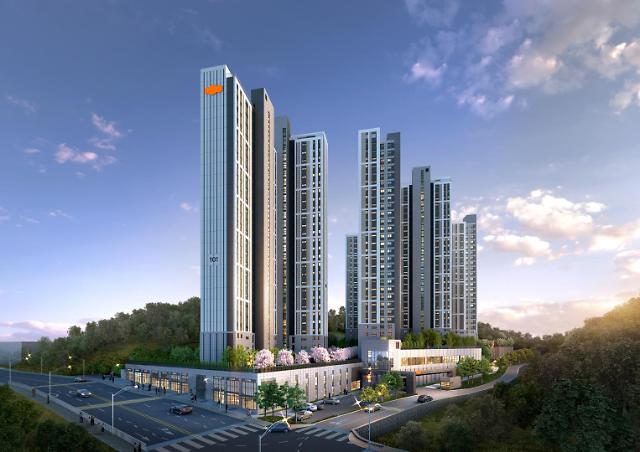Increased tax burden for multi-homeowners such as transfer tax and taxation tax
Scarcity of non-regulated areas due to expansion of areas subject to adjustment↑

ePyunhansesang Gapyeong First One[사진=대림산업 제공]
As various changes are expected in the real estate market, such as taxes and residence obligations, from next year, major complexes ahead of sale are attracting attention. Various variables are expected in next year, such as an additional adjustment target area being designated on the 17th, and it is necessary for consumers planning to build their own houses to confirm the different systems and devise strategies.
According to Real Estate 114, the transfer tax and comprehensive real estate tax will increase from next year. Until now, if a single homeowner in a household had the right to sell, it was considered as one housing and whether it was not subject to the transfer tax, but the new right to sell from January 1 of next year is included in the number of houses. When a one-family homeowner acquires the right to sell for the purpose of moving, etc., a temporary tax exemption from two-household tax will be applied.
From June, when multi-homed people sell their homes, the median transfer tax rate will increase from’basic tax rate + 10-20% points’ to’basic tax rate + 20-30% points’. The tax rate is strengthened from the current 40% to a maximum of 70% when the right to occupy a house or a member of the union is sold for less than two years. The heavy tax rate is applied from transfers after June 1.
The comprehensive real estate tax will also increase to a maximum of 6% from January. When owning 2 houses or less, the tax rate is applied from 0.6% to 3.00% for each tax base section, and 1.2 to 6.0% for 2 houses in areas subject to 3 or more and adjustment.
In the case of special deduction for long-term retention, the requirement for a period of residence is added. From January 1 to 1, the long-term special deduction for long-term retention, which is applied when a homeowner transfers a house exceeding KRW 900 million, is deducted from 8% per year according to the current holding period, divided into 4% per year for the retention period and 4% per year for the period of residence, and 40% each Will be deducted until. Even if the retention period is long, if the actual residence period is short, the deduction rate is low, and the tax burden can increase.
The industry is predicting that from next year, as multi-homed people’s tax hikes will expand sharply and the residency requirements are reinforced, the preference for a’smart one’ will increase. It is predicted that more consumers will prefer an apartment that satisfies various requirements such as location, apartment brand, marketability, and development good material rather than having multiple units.
The value of non-regulated areas is expected to increase further as the regulated area expands and the extent of tax hikes in the regulated area increases. In non-regulated areas, if 12 months have elapsed after joining the subscription passbook, the homeowner or household member can also subscribe, and 6 months after the winner’s announcement date, resale is possible.
An industry insider said, “Amidst the opinions of experts that house prices will increase further due to a decrease in occupancy volume and an increase in rental prices, despite strengthening regulations, the popularity of new complexes supplied at the end of the year and the beginning of the year is expected to continue.” It is a good way to keep an eye on the major complexes that are about to be sold, as is expected to increase and the scarcity value of non-regulated areas will increase further.”
Among these, major complexes that are about to be sold are attracting attention.
Daelim Industrial is planning to sell’e-Pyunhan World Gapyeong First One’ in Daegok-ri, Gapyeong-eup, Gapyeong-gun, Gyeonggi-do in January. The complex has a total of 472 households with an area of 59-84㎡, with 3 floors below the ground and up to 27 floors above the ground.
Gapyeong is an unregulated area with high scarcity in the metropolitan area, and is relatively free from regulations such as subscriptions, loans, and taxes.
Hyundai E&C plans to sell’Hillstate Yongin Dunjeon Station’ in the area of Gorim-dong, Cheoin-gu, Yongin-si, Gyeonggi-do in December. The complex is composed of 1721 households with a total of 1721 units with an area of 59-84㎡, with 13 buildings, 2 stories below the ground and 29 stories above the ground.
It is a station area complex where you can use the light rail Ever Line Dunjeon Station and Bopyeong Station on foot, and you can travel to Giheung Station on the Suin Bundang Line through this line in 20 minutes.
©’Five-language global economic newspaper’ Ajou Economy. Prohibition of unauthorized reproduction and redistribution
